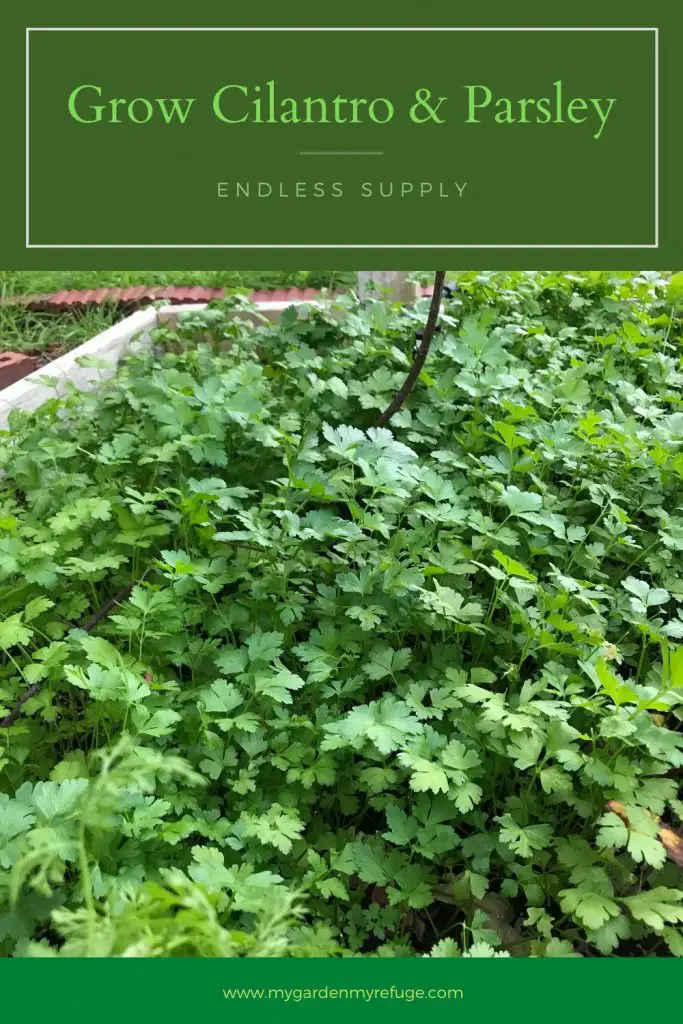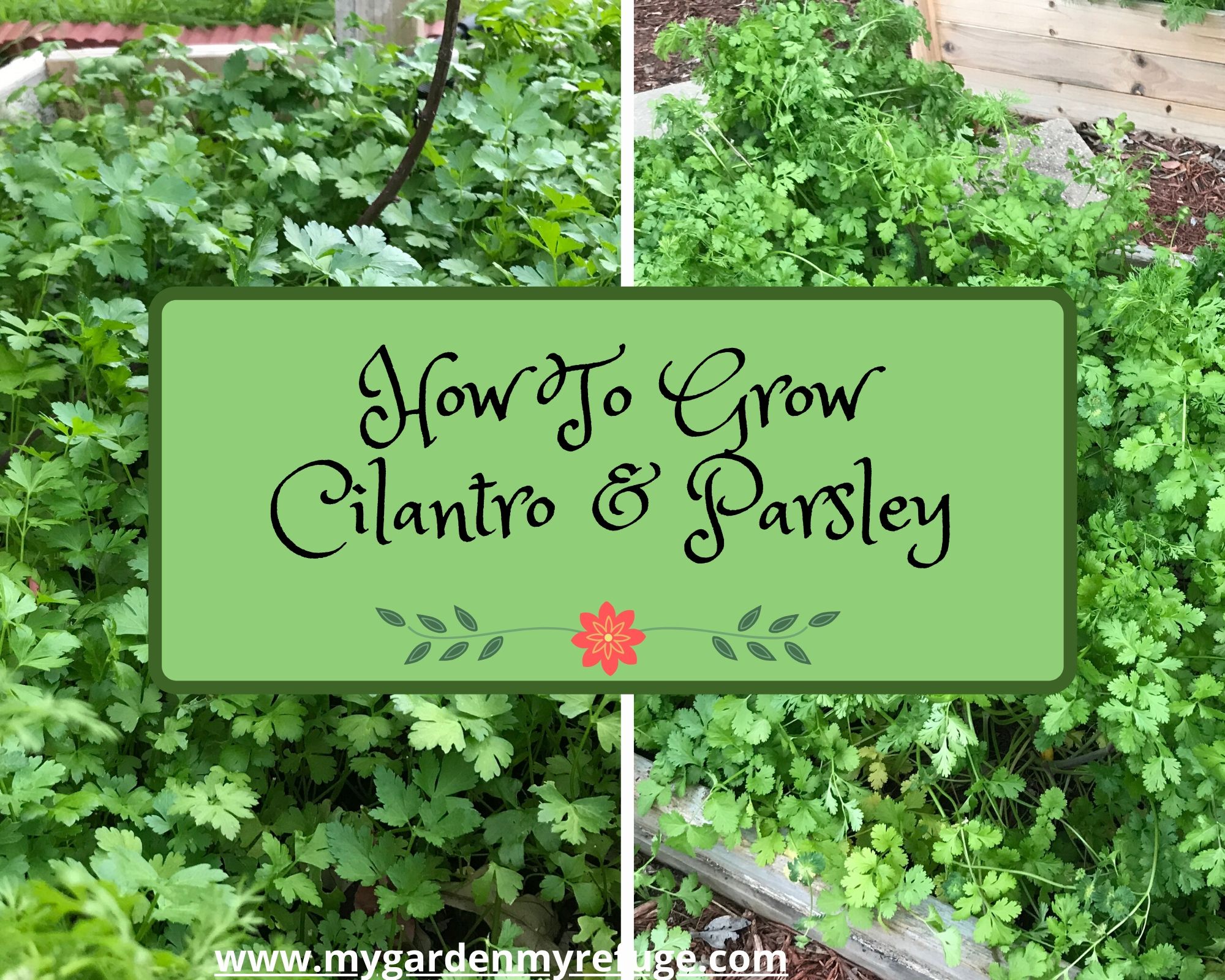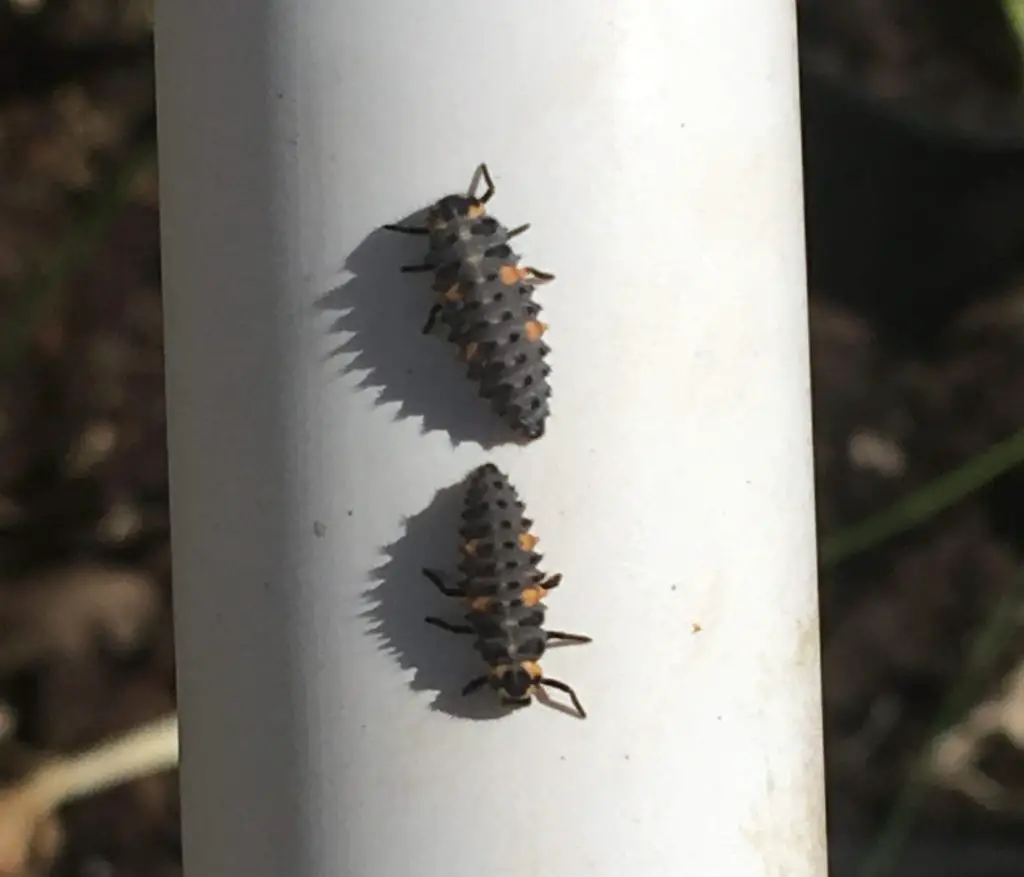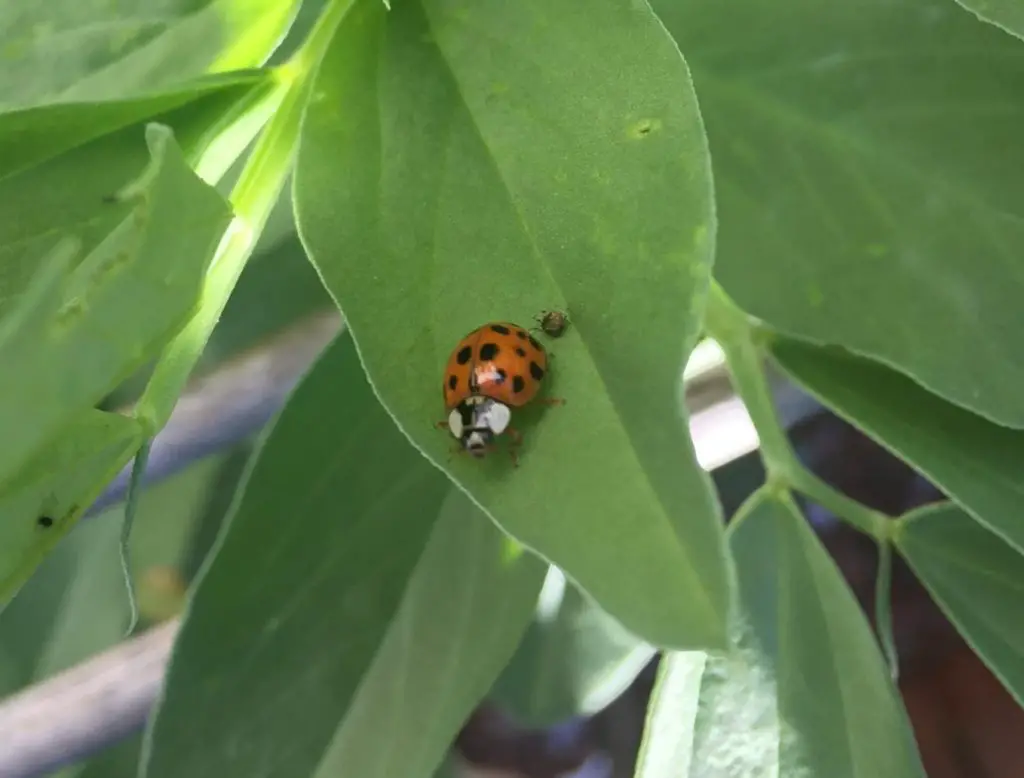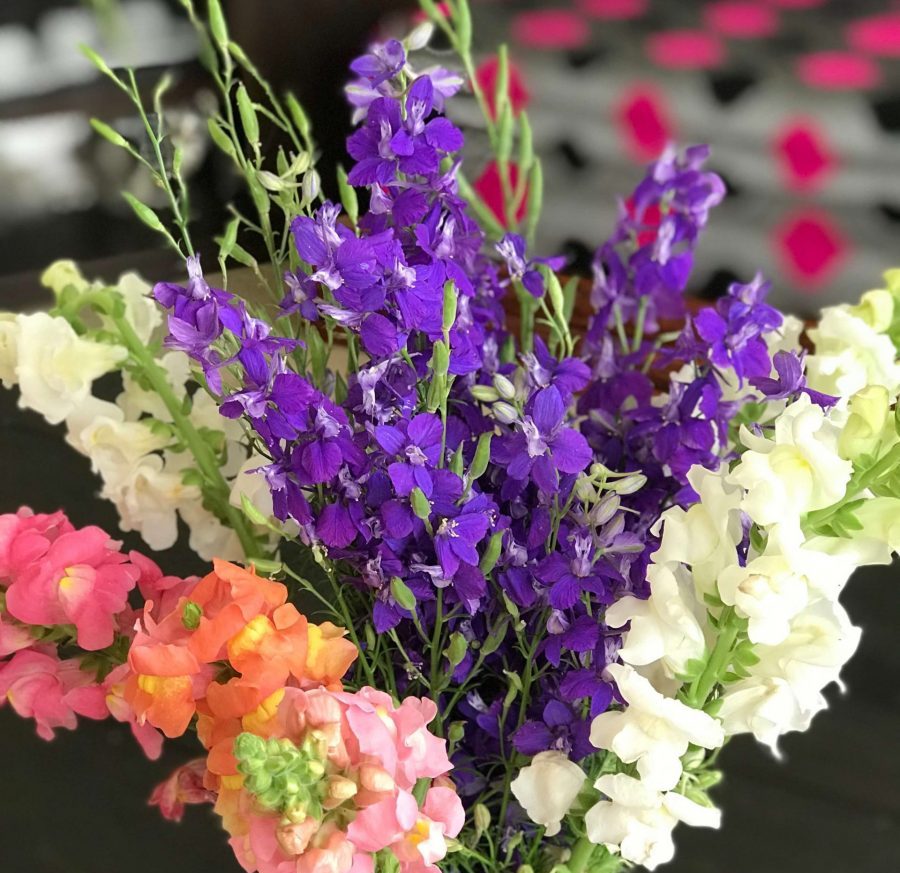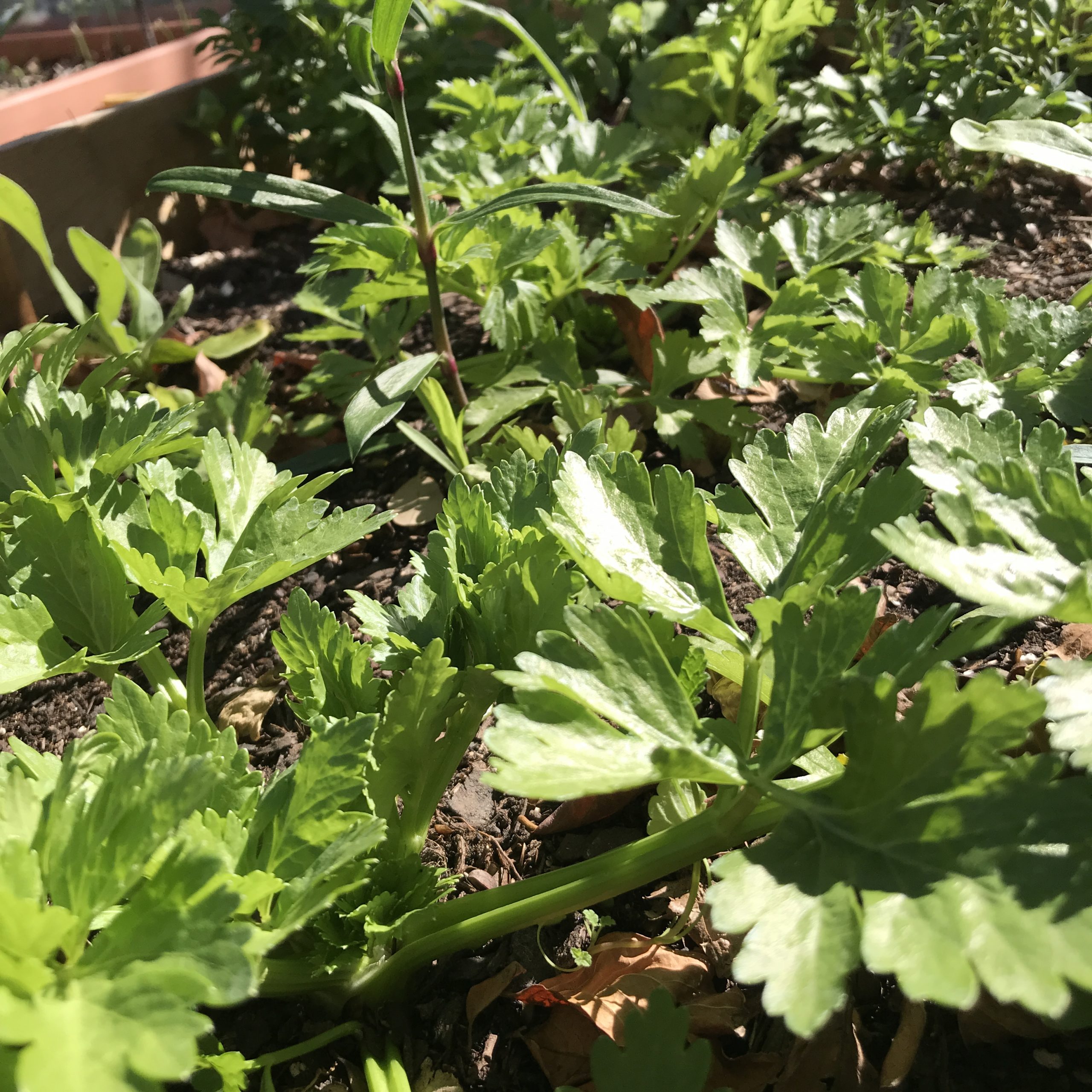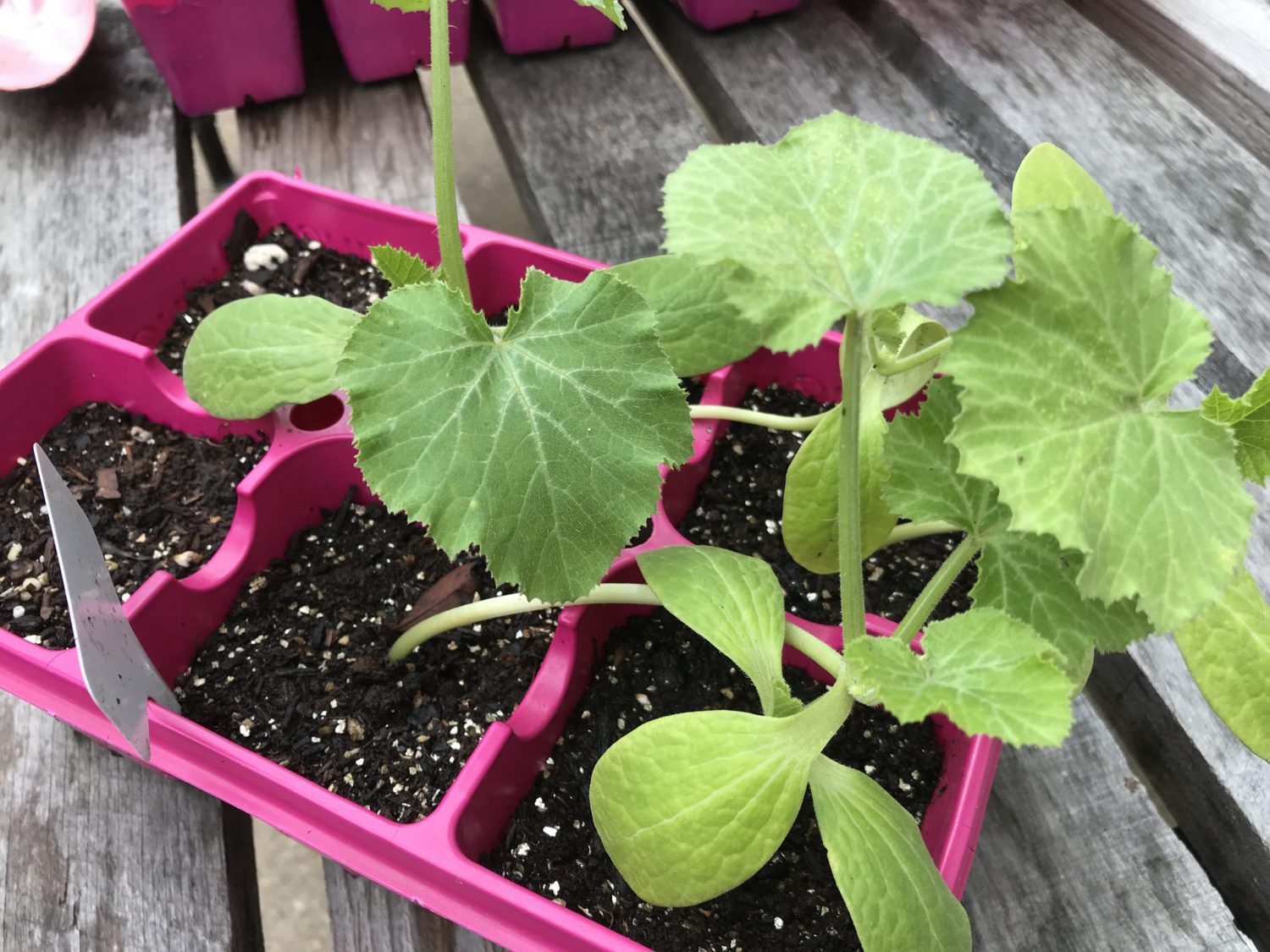Growing cilantro and parsley in central Texas is easy. They are annual herbs that grow in Fall and Winter. Then maybe left to flower in Spring to collect the seeds.
When To Grow Cilantro and Parsley?
Cilantro and parsley do not tolerate high temperatures. Anything above 75 will cause them to bolt or go to seed. For this reason, October and November are the ideal time to grow them in Central Texas.
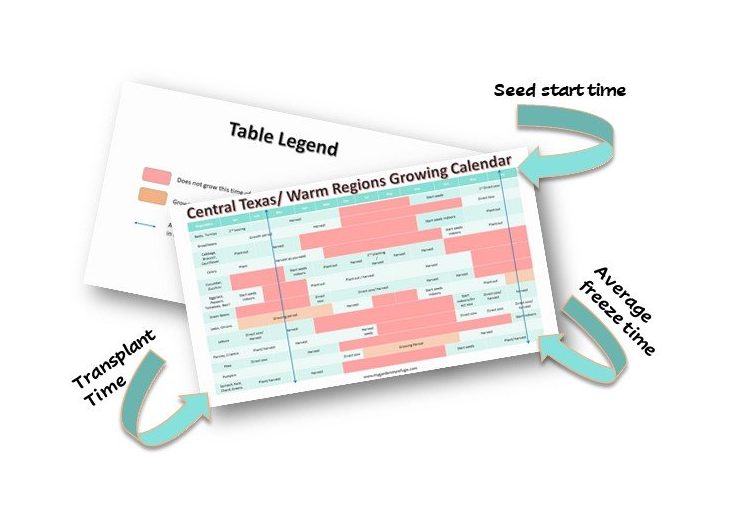
Growing Cilantro & Parsley from Seed or Transplant?
Both cilantro and parsley grow easily from seed or transplant. But, it is more budget-friendly to go with seeds.
There is no need to start the seeds indoors. Direct sow then in the ground once the temperatures drop below 80F. The germination will take place as soon as the soil temperature is ideal.
Quick Note: Cilantro seeds are much faster to germinate than parsley seeds. However, cilantro is quicker to bolt than parsley.
Sunlight Requirements for Growing Cilantro & Parsley
Due to central Texas mild winters, it is best to grow cilantro and parsley in partial sun area. The morning sun is best and the afternoon shade is ideal. This will prevent them from bolting fast.
What Kind of Soil to Grow Cilantro & Parsley?
Herbs, in general, are not finicky about soil requirements. Most types of soil should be good to grow cilantro and parsley except for heavy clay. If that’s the case, use some amendments such as compost to improve drainage.
What is the Ideal Spacing?
As I mentioned above, direct sowing is the most efficient way to plant cilantro and parsley. Even better, they do not need exact spacing. Scattering the seeds, usually, spaces them naturally.
Do I need to Fertilize Cilantro & Parsley Plants?
Most herbs do not require fertilization. Sometimes that might stunt their growth and result in a poor harvest. As long as the soil is well-draining and amended with nitrogen-rich compost, your herbs will be fine.
How to Water Cilantro & Parsley Plants?
Since cilantro and parsley grow during the cold season, most likely, no supplemental water is needed. Unless a drought period is in place, rainwater should be enough. Otherwise, water them regularly, allowing the soil to dry between watering.
Do Cilantro & Parsley Suffer from Pests?
I have been growing cilantro and parsley for years, and I haven’t encountered any pest problem. The only bug that “infested” my cilantro plants was ladybug larvae. Fortunately, those are beneficial insects since they feed on aphids. And the plant was at the flowering stage, so there was no loss.
Do I Need to protect Cilantro & Parsley from Freeze?
Growing cilantro and parsley in central Texas is subject to sudden freezing conditions. Fortunately, these two herbs are very cold tolerant despite their delicate appearance.
In case of a hard freeze that lingers for days, protect the plants with fleece or row cover. Otherwise, they will suffer from foliage discoloration but will recover fast enough.
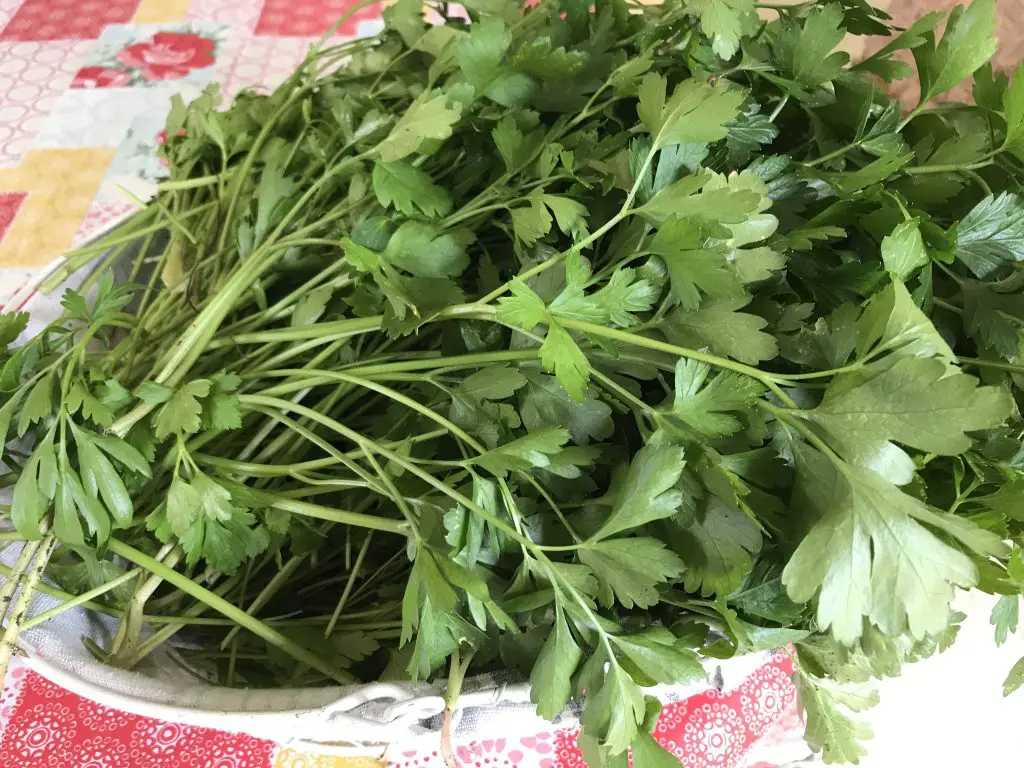
Harvesting Cilantro & Parsley
Harvest cilantro and parsley as you need them. Make sure to cut from the outer parts of the plant to allow the center to keep growing. Herbs are forgiving plants since the more you harvest, the more they thrive.
How to Preserve Cilantro & Parsley?
The most common ways of preserving fresh herbs are drying or freezing. As far as cilantro and parsley are concerned, I prefer to freeze them.
- Wash them well in a bucket filled with water. Submerging them in the bucket lets all the dirt sink to the bottom. If there are any bugs they will drown as well.
- I lay a big dry towel on the counter, spread the washed herbs, and allow them to air dry.
- The next day, I finely chop them and put them in freezer-friendly containers.
- I pour olive oil over them and mix to make sure all of it is coated.
- Close the lids tight, and freeze.
- It keeps well for six months.
Why I use Olive oil, it’s because it does not hard freeze into a rock-solid. It rather stays soft like ice-cream.
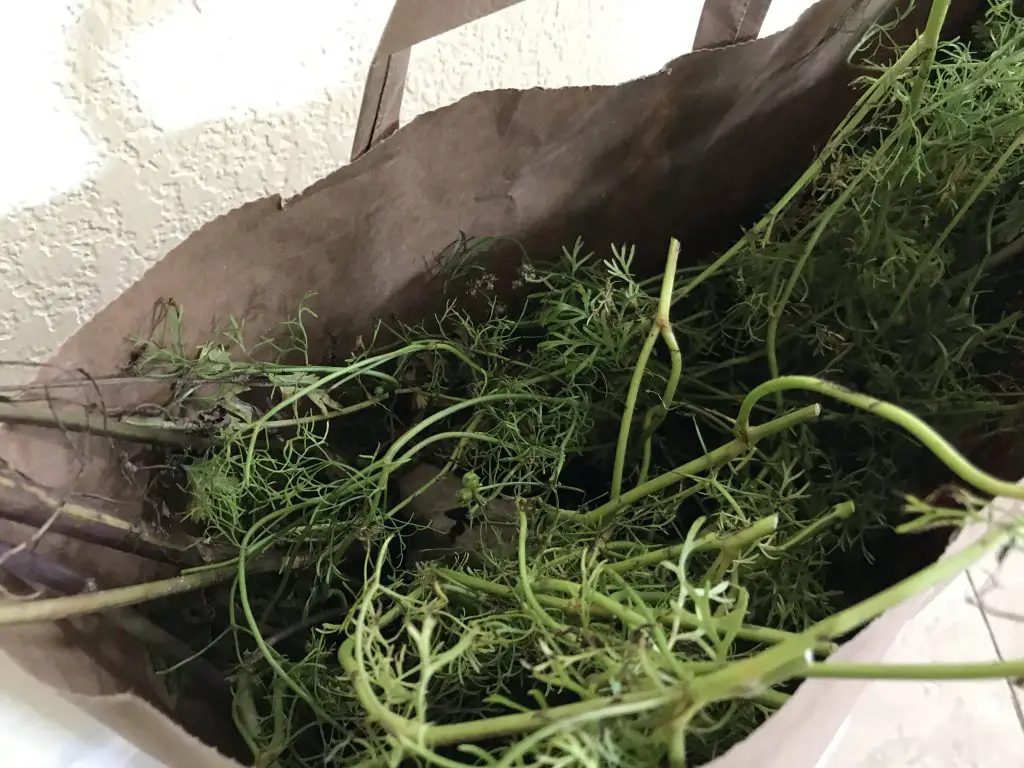
How to Harvest Cilantro Seeds or Coriander?
Once cilantro plant blooms, leave the flowers to mature and turn into buds. They are small green balls that will mature into coriander.
- When the balls get big enough, cut the top of the plant and bundle them.
- Turn each bundle upside down into a paper bag.
- Put the bags in a dark dry place to dry. It may take three to four weeks.
- Once crispy dry, shake the stems into the bags so the little balls would fall inside.
- Use a sieve to sift the larger debris. Then you need to carefully clean the mix from the small twigs.
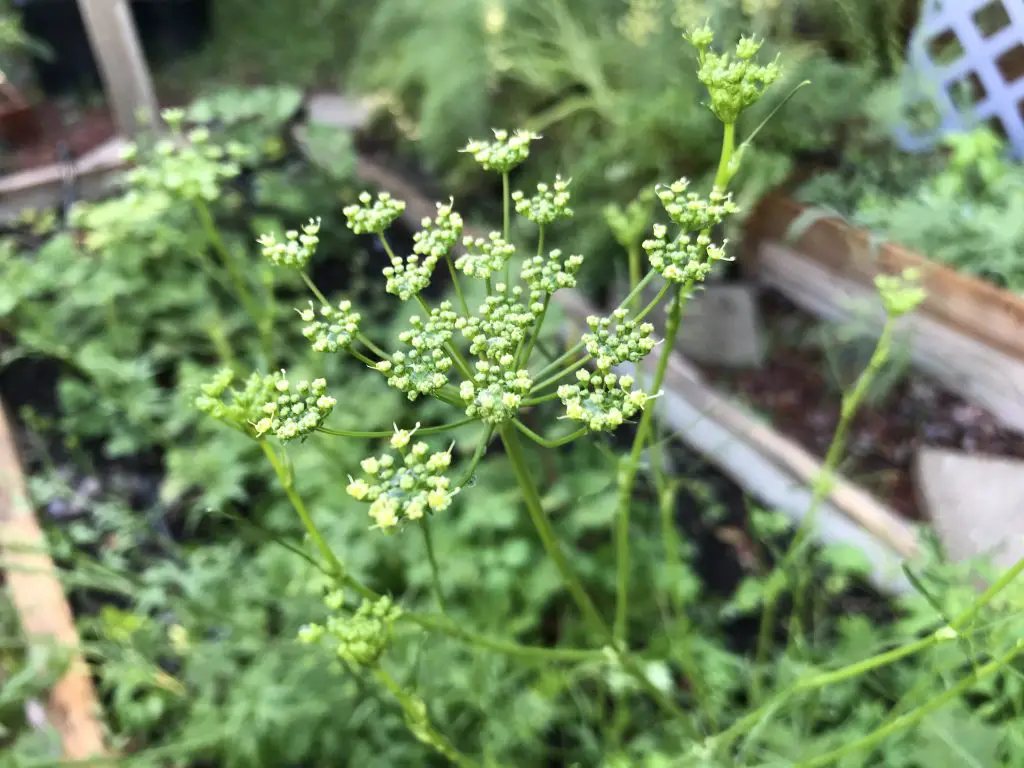
How to Save Parsley Seeds
As soon as the temperature rises above 75F, parsley plants start bolting and shooting flower stalks. Leave the flower alone while the pollinators enjoy it.
What looks like a big white flower is, in reality, a cluster of many small ones. Once pollinated, they turn into little seeds very similar to fennel seeds.
- To collect the seeds, cut off the flower once pollinated. Flip it upside down into a paper bag. Then set it aside for a few weeks to let the stem dry completely.
- After drying completely, shake the flower into the bag. The seeds should fall off easily. Rub the remaining ones with your hands to release them.
- To clean the seeds from the plant debris, lay them in a shallow tray. Grab some with your hands and rub them, while allowing to fall back into the tray.
- Lastly, you either use a sieve to sift the seeds through or gently blow over the tray to remove the lightweight rubbish.
- For further cleaning, handpick the seeds.
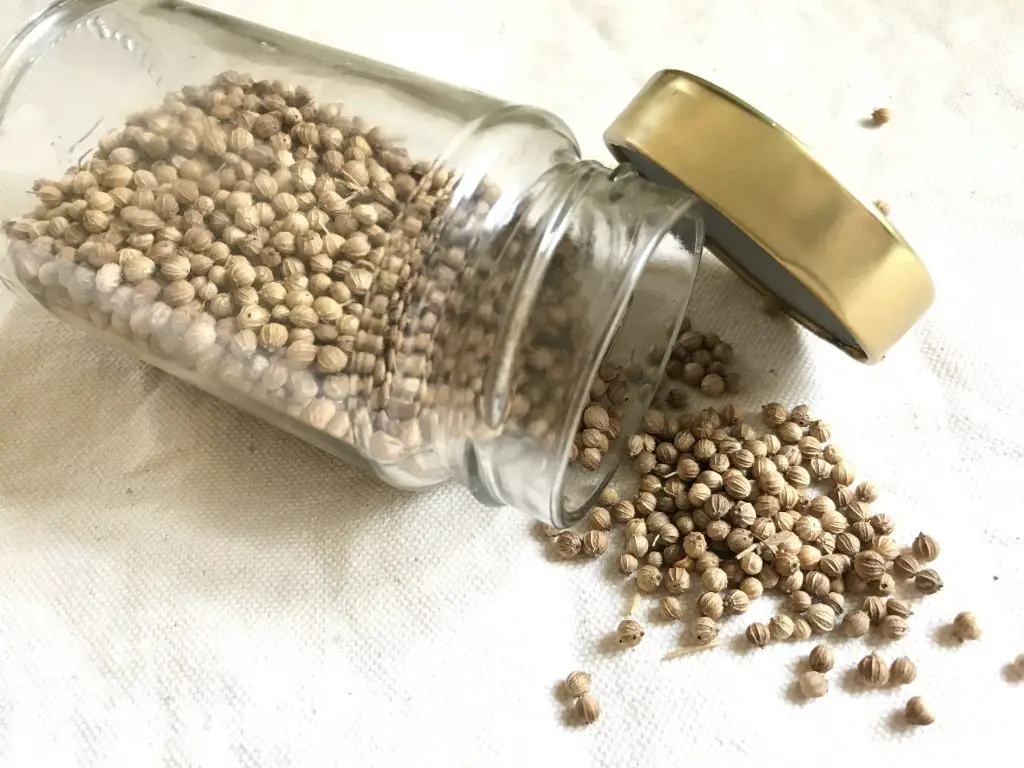
How to Store Cilantro & Parsley Seeds?
Cilantro plants produce a generous amount of seeds, which you may use as coriander spice. The best way to store them is by putting them in an airtight glass jar.
Save some for next planting season, and use the rest in your cooking. Better not to grind the whole harvest of seeds at once. Coriander tastes better when it’s freshly ground.
As far as parsley seeds are concerned, store them for the next planting season in a paper seed bags or a small glass jar. Store them in a dry and cool place.
In the kitchen
Cilantro is used widely in Latin American, Indian, and North African cuisines. I like to pair it with cinnamon especially in soups. As an added bonus, cilantro seeds become the common spice called coriander. It is present in Indian dishes and North African as well. Some dishes that we get to use cilantro:
- Algerian Burghul soup
- Vegetable soup
- Vegetable Biryani
- Curries
Parsley is more loved than cilantro. It is used as a flavor enhancer or as a garnish in many dishes around the world. It is famously used as the main ingredient in the middle eastern salad called Tabouleh. In my household, parsley is added to almost every dish we make.
